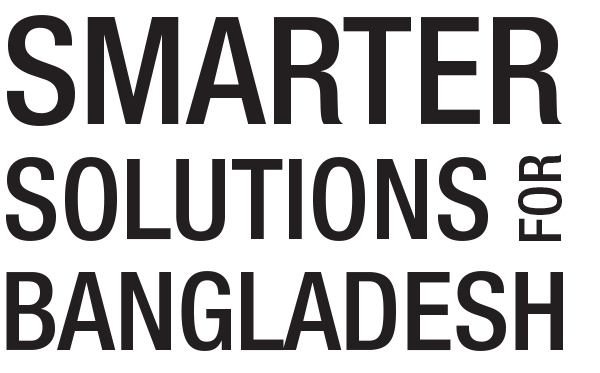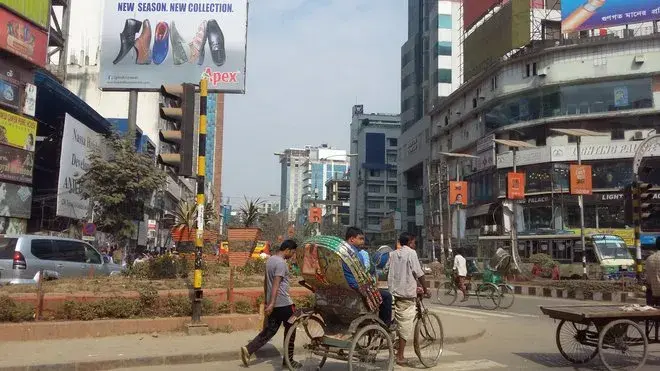How streamlining opportunities to migrate overseas can help Bangladesh prosper
by Bjorn Lomborg
In Bangladesh, remittances from people living and working abroad added up to nearly Tk 1.2 trillion last year—more than four times the nearly Tk 250 billion that foreign aid agencies spent in the country.
Almost 5 percent of the total working age population is now migrant workers, and every year, roughly half a million more people leave the country to work overseas. Bangladesh Bank estimates they send the equivalent of 7.4 percent of GDP back to family and friends —from 2001-2015, this totaled Tk 9.6 trillion.
Despite these remittances from overseas migrants, Bangladeshis reap fewer benefits from migration than they could. The informal process of migration is overly costly and has become riddled with expensive middlemen.
How can low-skilled migrant workers, the major contributor of remittance inflows to Bangladesh, boost their earnings and access better opportunities overseas? Bangladesh Priorities can offer solutions to this and many other challenges. The project, a partnership between the Copenhagen Consensus Center and BRAC, has commissioned dozens of top economists from the country, region, and world to study how Bangladesh can do the most good for every taka spent on her development efforts.
New research suggests strategies that can make migration cheaper and make migrants more productive. The researchers—Wasel Bin Shadat, lecturer of econometrics at the University of Manchester, and Kazi Mahmudur Rahman, assistant professor of development studies at the University of Liberal Arts Bangladesh—examined various proposals. The most promising was to formalize the migration process with existing union digital centers, or UDCs.
| Strategy | Takas of benefits per taka spent |
|---|---|
| Union Digital Center migration servicess | 22 |
| Skills training for migrants | 3 |
The average cost to migrate ranges from about Tk 168,900-216,600—equal to three years of income for many Bangladeshis. It often takes two years of working abroad for migrants to recover these costs. One reason the costs are so large is that multiple layers of middlemen force migrant workers to pay inordinate feeds for visas and other expenses. They take advantage of the fact that most lower-skilled migrants have very little information about either the process of migrating or the country they are moving to.
Using UDCs to formalize the process, however, could yield tremendous benefits. There is already much interest in formal migration—in 2013, after the national government signed an agreement with Malaysia to formalize the process through a government-to-government (G2G) arrangement, nearly 1.4 million people registered online through UDCs. The G2G process has been extended to G2G plus, engaging the private sectors of both countries, and the present research examined the role that UDCs could play in connecting millions of less-skilled migrant workers with the formal migration process.
More than 4,500 UDCs currently operate across the country, providing public and private services to millions of Bangladeshis. Adding migration services would be inexpensive and straightforward given the experience UDCs have in providing such services. You would simply have to add a migration “department”—a few more desks and workers—to UDCs to bring formal migration services closer to the people who need them most, especially in rural areas.
At a UDC migration desk, which could be funded either by government subsidy or revenue earnings of UDC entrepreneurs, aspiring overseas workers would get services that range from basic forms and photo identification to employment information and visa processing to printing and internet services. And conveniently, UDCs can collect fees on behalf of the government.
The experts estimate that it would require Tk 172,800 of initial investment to set up a migration department in each UDC, and annual operating costs would be Tk 44,500. The total cost across Bangladesh’s 4,500 UDCs would be Tk 785 million upfront, plus Tk 203 million per year in operating costs.
But the benefits would be substantial. Services offered by UDCs would allow a conservative estimate of 50,000 people—about 11 people per UDC—to migrate to Malaysia in the first year of operations, with 5,000-10,000 additional workers in subsequent years. As a result, the cost for one person to migrate would fall to Tk 36,500 — a savings of up to 83 percent. More than three quarters of the remaining migration cost would be for airfare. Thanks to the elimination of middlemen and their exorbitant fees, visa costs would fall from over Tk 117,000 to just Tk 1,092 —the actual cost of the visa.
With the most optimistic aspirations, each taka spent toward formalizing international migration through UDCs could produce 40 takas worth of benefits. It is also clear, however, that the current process with Malaysia has delivered less than originally hoped. Currently, it looks likely that each taka has done much less good. That is why the researchers expect that realistically, improving the process to streamline international migration through the UDCs could generate 22 takas of good for every taka spent.
Using UDCs could help get more people to migrate, but you could also focus on increasing the skill levels of the people who migrate. Migrants from Bangladesh predominantly work in positions such as laborers, cooks, or security guards. From 2005-2012, for example, about three-quarters of migrant workers to Saudi Arabia were “less-skilled,” and only 4 percent were in the so-called “semi-skilled” category. Lower-skilled workers not only earn less but also have less bargaining power with employers.
Helping migrants move up the skill ladder would equip them with knowledge and qualifications to gain access to better jobs. Training could allow them to work as painters or carpenters, for example, or perhaps even become supervisors or nurses with enough education. Spending on training programs for migrant workers would do an estimated 3 benefits per taka spent.
What do you think is the best way for Bangladesh to realize her development goals? Join the conversation at copenhagen.fbapp.io/overseasmigrationpriorities where you can also read about other exciting opportunities for Bangladesh. We want to know what you think as we continue to search for how the country can prosper most.
Dr. Bjorn Lomborg is president of the Copenhagen Consensus Center, ranking the smartest solutions to the world’s biggest problems by cost-benefit. He was ranked one of the world’s 100 most influential people by Time Magazine.
This article was originally posted in The Daily Star.


